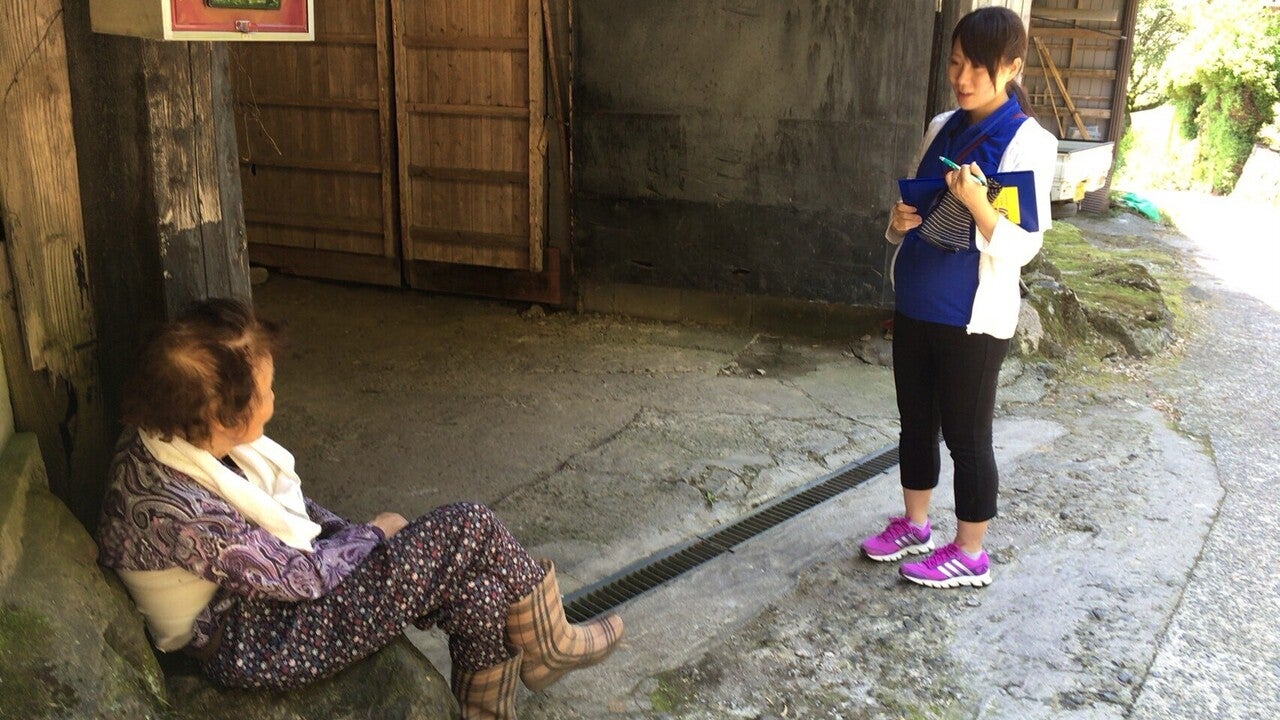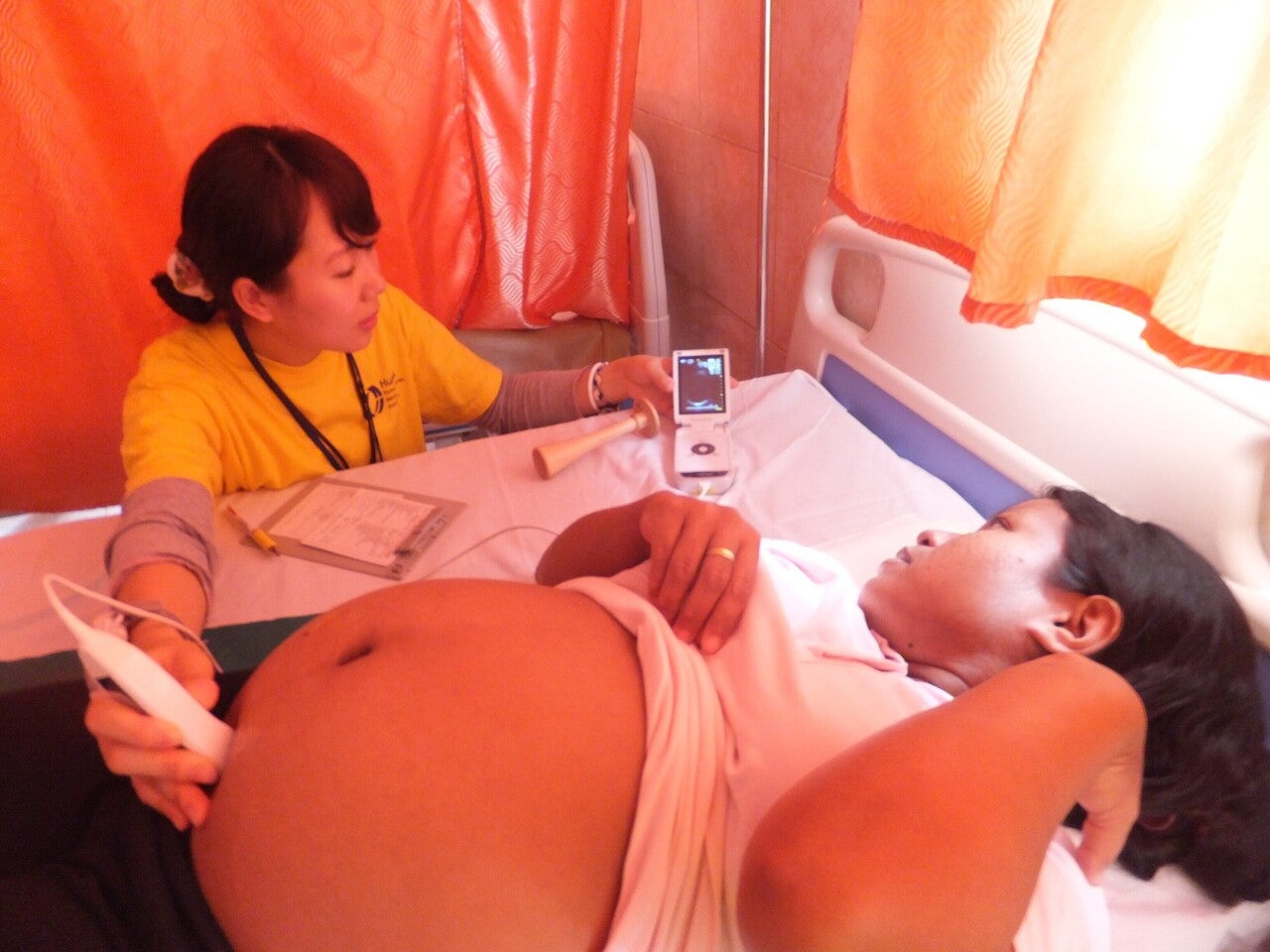| Kimiko Yamashita (Chief Physician, Chibune General Hospital) Interview that focusing on people participating in HuMA activities. The 3rd interview is about Kimiko Yamashita who is a doctor specialized in obstetrics and gynecology, emergency treatment and disaster medicine and also a mother of two children. Through her story, she wants to let everyone know that “without sacrificing your ordinary work or family, you can be involved in disaster assistance.”  “My family’s support encourages me,” said Ms. Yamashita (here with her husband and children) . “My family’s support encourages me,” said Ms. Yamashita (here with her husband and children) . Aiming to become the doctor that she dreamed of being in her childhood As I admired Black Jack(*) from an early age, I believed, “if I become a doctor, I will definitely be Black Jack.” Such simple incentive – rather too simple looking back on it now – urged me to pursue a carrier in medicine. (*Black Jack: A main character of a Japanese comic book series on medical adventure who makes effort to save people’s lives as a doctor while giving some life lessons.) Perhaps because of that, I had an indescribable feeling of awkwardness at university when facing medicine as a discipline. I spent my school days agonizing over, “What do I really want to do?” Against that backdrop, I had a chance to listen to a talk of a doctor who worked as a member of Medecins Sans Frontieres/Doctors Without Borders (MSF). They examine all the body of people whose lives are at stake and give them the best medical treatment regardless of department such as surgery or internal medicine. The way the doctor was seemed to overlap my ideal image of doctor that I always dreamed of being when I was young. After graduating from university, I chose to become an emergency doctor as if the experience gave me a supportive push. I first learnt about HuMA when I started working at a hospital. Hearing some talks from my boss, who was already one of the HuMA members, I had interest in its activities and first joined the medical support team on the occasion of the Great East Japan Earthquake in 2011. Speaking honestly, I had a bitter experience. At that time, the team was led by a seasoned doctor called a legend. While I received guidance from the leader, all I could do was to manage somehow wherever I can. I do remember a person in a very critical condition due to advanced chronic cancer quite well. We couldn’t bring him to hospital because the patient was bedridden. Therefore, the leader decided to provide first aid at home. I couldn’t follow their discussions and just stood beside the bed while the treatment was being provided by other doctors. I keenly realized my inability and felt depressed. Still, curious to say, I never had a feeling of quitting my involvement in disaster medicine. The year after the Earthquake, I joined an assistance activity at a site hit by a typhoon in the Philippines. Although I couldn’t do something special there, I was encouraged by words and smiles of local people saying, “Thank you for coming.” This engagement in the Philippines is supposed to be when I began thinking of continuing disaster medicine assistance in full swing. Hoping everyone can join the assistance community even a little at a time I joined the assistance for the 2016 Kumamoto Earthquake while I was pregnant. Others might consider one should not go to the site of disaster during pregnancy; however, I wanted to help relieve the anxiety of the pregnant women in the disaster area as much as possible because I was also pregnant. I went to Aso City, which was significantly damaged, and cooperated with the local public health nurses to confirm the health status of the pregnant women in the city for approximately a month. At that time, I was also in charge of the publicity of HuMA. I became active in communicating through social network media because, on one hand, I tried not to over-burden myself as overwork is not good for the health of my baby and myself; on the other hand, in order to carry on the assistance, the team realized that it was also important to make more people know the activities of HuMA.  In the disaster area of the 2016 Kumamoto Earthquake In the disaster area of the 2016 Kumamoto Earthquake There are many ways to participate in disaster medical assistance other than medical treatments. For example, letting more and more people know how the activities are conducted or raising fund for the activities is also one of the important tasks. Yet many medical workers misperceive that they have to be in the disaster areas for months or sometimes even years or they have to sacrifice the families or the works at the current hospitals. The assistance activity can be more flexible. Even if one is a hospital doctor or has family, there are still things that one can do as long as oneself is involved. I hope to demonstrate it through what I do. At disaster areas, significant manpower is needed. If everyone can join the assistance community even a little at a time, it can definitely generate enormous power to save lives. |
 |
| Stayed close to the pregnant women in the Philippines in 2013 |
By Yuki Domoto
Translation by Mariko Hirata and Yuheng Yu
(PR volunteers)


